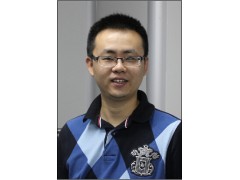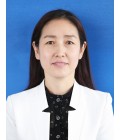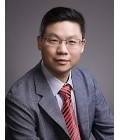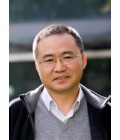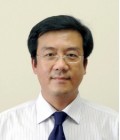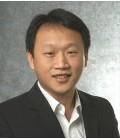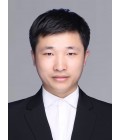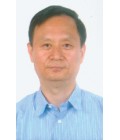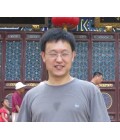熊宇杰,中国科学技术大学教授、博士生导师,1979年出生于江西省吉安市。多年来一直致力于发展无机固体的精准制备化学,应用于催化剂设计和柔性器件制造。2011年在中国科学技术大学工作以来,围绕固体催化材料体系,致力于发展相关材料表面和界面结构精准可控的合成方法(“无机纳米化学”和“无机合成与制备化学”),以合成获得的具有精准可控结构的材料模型为研究对象,建立表界面结构与催化性能之间的构效关系(“固体结构化学”和“表面与界面化学”),发展决定催化过程中各个步骤的关键材料参数设计原则。
教育及工作经历:
2011年至今,中国科学技术大学,任化学与材料科学学院教授、博导,并双聘于合肥微尺度物质科学国家实验室(筹)2009年-2011年,美国华盛顿大学(圣路易斯),任国家纳米技术基础设施组织首席研究员,并兼任纳米中心管理主任。
2007年-2009年,美国伊利诺伊大学香槟分校,任材料与科学工程系助理研究员(合作导师:Prof. John A. Rogers)
2004年-2007年,美国华盛顿大学(西雅图),任化学系博士后(合作导师:Prof. Younan Xia)
2000年-2004年,中国科学技术大学化学系,获无机化学博士学位(导师:谢毅院士)。
1996年-2000年,中国科学技术大学少年班系00班,获化学物理学士学位(导师:谢毅院士)。
学术、社会及机构任职:
1、安徽省青年联合会第十届委员会委员,2011年至今。
2、欧美同学会千人计划专家联谊会化学化工专业委员会委员,2012年至今。
3、中国化学会青年化学工作者委员会委员,2014年至今。
4、第五届中国青年科技工作者协会会员,2014年至今。
5、Board Committee Member,International Academy of Electrochemical Energy Science (IAOEES),2014年至今。
6、Editorial Board Member,Scientific Reports (Nature Publishing Group),2014年至今。
7、Senior Editor,Journal of Nanoscience Letters (Cognizure),2014年至今。
8、Editorial Board Member,Progress in Natural Science: Materials International (Elsevier),2014年至今。
9、Editorial Board Member,JSM Cell (JSciMed Central),2013年至今。
10、《中国化学快报》青年编委,2014年至今。
11、Journal of the American Chemical Society、Angewandte Chemie、Nature Communications、Chemical Society Reviews、Advanced Materials、Nano Letters、ACS Nano、Advanced Functional Materials、Advanced Energy Materials等60余种国际期刊的审稿人。
培养研究生情况:
目前正在培养硕士和博士研究生22名,已毕业博士生6名、硕士生1名,其中2名研究生获得研究生最高奖“中国科学院院长特别奖”、8名研究生获得“研究生国家奖学金”、4名研究生获得中国科学院“朱李月华奖学金”、1名研究生获得“牛津仪器明日之星奖学金“、2名研究生获得“兴业全球责任奖学金”、1名研究生获得“光华奖学金”、2名研究生获得“中央高校基本科研业务费专项资金”资助。自2011年以来,已指导本科生毕业论文22名和校级“大学生研究计划”学生12名,其中3个团队获得“国家大学生创新训练计划项目”资助、1名学生获中国科学技术大学最高奖“郭沫若奖学金”。
研究方向:
面向全球性的能源与环境方面的重大需求,本课题组在洁净能源与节能技术方面开展一系列的材料研究工作。主要将纳米制造技术与可控合成方法相结合,通过对无机材料性质和功能的调控,在理论上揭示纳米结构与产品中的能量传递及转化性能演变规律,在实验上优化纳米结构及器件的结构特征,促进光能、电能、热能与化学能之间的相互转换,形成由能量转换、能量存储到节能器件的一条龙体系。本课题组的研究属于交叉学科,涉及化学、材料、物理以及电子等学科领域。
研究总体思路:功能材料的开发及应用发展到目前阶段,已遇到一定的瓶颈,关键问题在于单一材料体系已然无法突破性能上的限制并满足应用领域的需求。每种特定的材料都具有某方面独特的性能及优势,例如金属在分子吸附与活化和表面等离子激元方面的特性、半导体在光致电子-空穴分离方面的性质、以及石墨烯等碳材料在二维限域体系中的电子传输优势等。因而材料的复合是突破单一材料性能上瓶颈的有效途径,并且可以通过协同作用增强各自的性能,比如半导体和金属复合后有利于降低其电子-空穴复合。然而复合材料的性能通常很难实现材料各自优秀性能的叠加,其中关键的瓶颈问题是:1)在实现材料复合的同时,很难做到组成单元各自的表面调控;2)复合材料体系界面的结构调控极为困难。无机材料调控的基础是化学,因此本课题以无机化学为调控手段,探索功能复合材料体系的表/界面的形成机理、构效关系及调控方法,实现多种材料性能的复合与协同,以优化其在“二氧化碳转化与分解水制氢”和“柔性无机太阳能电池”两个应用中的性能。具体到应用体系,光催化和太阳能电池是目前缓解能源与环境危机的两个重要应用,其原理和过程上有很多的共同点,比如光子的吸收、电子-空穴分离等。本课题组从“以能量转换为应用导向、以物理机制为理论先导、以无机化学为调控手段”出发,以期实现复合材料的可控生长、合成及构筑,探索材料的构效关系(包括表面和界面结构、成分、尺寸等),确立材料协同工作原理(光电相互作用、电子空穴分离、电子转移、等离子体激元效应等),力求构筑出具有复合协同功能的材料体系。
1. 面向洁净能源的纳米催化剂设计
二氧化碳转化燃料的催化反应由于其独特的可降低大气中二氧化碳含量并同时产生燃料来源的特点,在未来的能源环境应用领域中将起很重要的作用。近年来,金属纳米催化剂作为二氧化碳光催化转化反应催化剂(金属-半导体复合结构)的重要组成部分,已经取得了一些进展,并且证实了其有效性,但是其催化活性与选择性有待提高。为了进一步开拓金属纳米催化剂在此领域中的应用,课题组提出了通过纳米晶的可控合成与新的表征手段来设计与合成高效的二氧化碳光催化转化燃料的催化剂的构想和实施方案。在此同时,本课题组还将此类纳米催化剂的设计与合成方法应用于电催化和有机催化中,以开发其在燃料电池和生物质转化等洁净能源中的应用。
2. 高效柔性光电器件的微纳制造
传统的无机光电器件(如太阳能电池和发光二极管等)必须加工成坚硬的板块状物件,限制了其许多日常用途。相比之下,柔性器件重量轻、且可以折叠、卷曲、粘贴在曲面上(如汽车玻璃、屋顶、衣服等)。因此业界在致力于提高器件的光电转换效率的同时,也在不断努力提高其力学柔性,以使其能够早日便利地应用到日常生活和高端用途中。目前有机光电器件由于有机分子的独特韧性,已经较早地应用于柔性器件的设计与加工中。然而,有机光电器件的光电转换效率等性能远低于无机光电材料,因此如何克服无机半导体晶片极脆易碎的缺点,是开发出高性能的无机光电器件的关键问题之一。本课题组将从无机材料化学的角度,通过结合“自下而上”和“自上而下”两方面的纳米科技方法,在材料的设计合成与微纳加工、光电转换机制与器件设计集成等层次上,对无机半导体的微纳化和薄膜化开展系统而深入的研究工作,为其在太阳能转换和发光器件方面的应用提供新技术。特别的是,本课题组将具有可控表面等离子体激元特性的金属纳米结构集成于器件中,起到增强太阳能电池的光吸收和发光二极管的出光效率等调光作用,以保证半导体材料在纳米尺度下的光电性能。
承担科研项目情况:
1. Infrastructure-Based Joint Grant, National Natural Science Foundation of China (NSFC), Investigation for the Relationship between Surface Structures of Metal Oxides and Performance of Photocatalytic CO2 Conversion Based on Synchrotron Radiation Techniques, 2016-2018
2. Regular Grant, National Natural Science Foundation of China (NSFC), Design and Synthesis of Semiconductor-Metal Hybrid Structures for CO2 Photocatalytic Conversion, 2015-2018
3. National Basic Research Program of China, Ministry of Science and Technology, Coupling and Evolution of Electronic States at the Surface and Interface of Photocatalytic Systems, 2014-2019
4. Specialized Research Fund for the Doctoral Program of Higher Education (for PhD Advisors), Ministry of Education, Inorganic Materials Design for Novel Flexible Solar Conversion Devices, 2013-2015
5. USTC Grant for Key Research Projects, Fundamental Research Funds for the Central Universities, Micro- and Nanostructure Design of Catalysts for Efficient Use of Carbon Resource, 2013-2015
6. Research Innovation Team, Fundamental Research Funds for the Central Universities, Construction and Function Control of Hybrid Nanoscale Systems Based on Low-Dimensional Carbon Materials, 2013-2015
7. Key Research Plan for Nanofabrication, National Natural Science Foundation of China (NSFC), Nanofabrication for High-Efficient, Flexible Thin-Film Monocrystalline Silicon Photovoltaics, 2012-2014
8. Young Investigator Grant, National Natural Science Foundation of China (NSFC), Design, Synthesis and Mechanism Studies of Nanocatalysts for the Conversion of CO2 to Fuels, 2012-2014
9. National Recruitment Program of Global Experts, and Hundred Talent Program, Chinese Academy of Sciences, 2012-2014
10. Young Investigator Grant for Basic Research, Hok Ying Tung Education Foundation, Micro- and Nanostructures in the High-Efficient, Flexible Thin-Film Monocrystalline Silicon Photovoltaics, 2012-2014
11. USTC startup package, University of Science and Technology of China, 2011-2012
12. St. Louis Institute of Nanomedicine (SLIN) Pilot Grant, Missouri Life Sciences Research Board, Correlation of Metallic Nanoparticle Toxicity with Physiochemical Properties, 2010-2011
研究成果:
已在Science、Journal of the American Chemical Society、Angewandte Chemie、Chemical Society Reviews、Advanced Materials等国际刊物上发表论文110余篇,2014年和2015年连续两年入选Elsevier发布的“中国高被引学者(化学)”榜单。研究论文已被引用10,000余次(H因子为47),其中29篇论文单篇引用过百次,最高单篇引用2,000余次,18篇论文被ESI评为近十年高引频论文。研究成果被纽约时报、路透社、美国广播公司、英国广播公司、美国国家广播公司、麻省理工技术评论、美国化学与工程新闻、探索频道、美国新闻与世界报道等国际媒体、网站报道转载。1项成果入选中国科学院2013年度重大科技基础设施重要成果。获得美国专利1项和中国专利4项。
发明专利:
1. A Type of Palladium Nanocrystal and Its Synthesis. Xiong, Y. and Long, R., China Patent Application 201510891010.3
2. Metal Crystalline Nanostructures and Methods for Their Preparation. Xia, Y. and Xiong, Y., US Patent No. 8,257,465
3. Synthesis of alpha-Fe2O3 Catalysts for the Oxidization of Carbon Monoxide. Xie, Y.; Xiong, Y. and Li, Z., China Patent ZL 200410014545.4
4. Aqueous Synthesis of Aligned Ferric Oxyhydroxide Nanowires on Homogenous Substrates. Xie, Y. and Xiong, Y., China Patent ZL 03132256,5
5. Hydrothermal Synthesis of Metal Phosphide Nanowires. Xie, Y.; Xiong, Y. and Li, Z., China Patent ZL 03131771,5
6. Hydrothermal Synthesis of Wurtzite-Type Nitride Nanocrystals and Their Alloy Nanocrystals. Xie, Y. and Xiong, Y., China Patent ZL 03132257.3
Book Chapters:
1. Interactions of Metallic Nanocrystals with Small Molecules. Long, R.; Xiong, Y.,* Metallic Nanostructures: From Controlled Synthesis to Applications (Eds., Xiong, Y.; Lu, X.), Springer (2014).
2. Metallic Nanostructures for Electronics and Optoelectronics. Zhou, S.; Xiong, Y.,* Metallic Nanostructures: From Controlled Synthesis to Applications (Eds., Xiong, Y.; Lu, X.), Springer (2014).
3. Some Recent Development in the Solution-Phase Synthesis of One-Dimensional Inorganic Nanostructures. Xiong, Y.,* One-Dimensional Nanomaterials (Ed., Zhou, Y.), Press of the University of Science and Technology of China (2009).
4. Shape-Controlled Synthesis of Palladium Nanostructures. Xiong, Y. and Xia, Y.*, Functional Nanomaterials: A Chemistry and Engineering Perspective (Eds., Chen, S.; Lin, W.), Press of the University of Science and Technology of China (2008).
5. Application of Coordination Chemistry in the Fabrication of Inorganic Nanostructures . Xie, Y.*; Xiong, Y. and Li, Z., Frontal Nanotechnology Research (Ed., Berg, M. V.), Nova Science Publishers, Inc., Chapter 2, P. 41-59 (2007).
6. Gamma-Irradiation Preparation of Nanomaterials. Xie, Y.* and Xiong, Y., Encyclopedia of Nanoscience and Nanotechnology (Ed., Nalwa, H. S.), American Scientific Publishers, Vol. 3, No. 1, P. 731-748 (2004).
Journal Articles (in chronological order): * Corresponding Author
2016
123. Enhanced Full-Spectrum Water Splitting by Confining Plasmonic Au Nanoparticles in N-doped TiO2 Bowl Nanoarrays. Wang, X.; Long, R.; Liu, D.; Yang, D.; Wang, C. and Xiong, Y.*, Nano Energy DOI: 10.1016/j.nanoen.2016.04.013.
122. Flexible Near-Infrared Photovoltaic Devices Based on Plasmonic Hot Electron Injection into Silicon Nanowire Arrays PDF. Liu, D.; Yang, D.; Gao, Y.; Ma, J.; Long, R.; Wang, C. and Xiong, Y.*, Angew. Chem. Int. Ed. 55, 4577-4581 (2016).
-> Selected as a VIP Paper of Angewandte Chemie.
121. Trimetallic TriStar Nanostructures: Tuning Electronic and Surface Structures for Enhanced Electrocatalytic Hydrogen Evolution PDF. Du, N.; Wang, C.; Wang, X.; Lin, Y.; Jiang, J. and Xiong, Y.*, Adv. Mater. 28, 2077-2084 (2016).
120. Integration of Multiple Plasmonic and Co-catalyst Nanostructures on TiO2 Nanosheets for Visible-near-infrared Photocatalytic Hydrogen Evolution PDF Jiang, W.; Bai, S.;* Wang, L.; Wang, X.; Yang, L.; Li, Y.; Liu, D.; Wang, X.; Li, Z.; Jiang, J. and Xiong, Y.*, Small 12, 1640-1648 (2016).
-> Selected as a 2/2016 Most-Accessed Article of Small.
119. Cooperative Nanoparticle System for Photothermal Tumor Treatment without Skin Damage.Piao, J.; Liu, D.; Hu, K.; Wang, L.; Gao, F.; Xiong, Y.* and Yang, L.*, ACS Appl. Mater. Interf. 8, 2847-2856 (2016).
118. Pd-Ag Alloy Hollow Nanostructures with Interatomic Charge Polarization for Enhanced Electrocatalytic Formic Acid Oxidation PDF. Liu, D.; Xie, M.; Wang, C.;* Liao, L.; Qiu, L.; Ma, J.; Huang, H.; Long, R.; Jiang, J.* and Xiong, Y.*, Nano Res. DOI: 10.1007/s12274-016-1053-6.
117. Incorporation of Pd into Pt Co-catalysts toward Enhanced Photocatalytic Water Splitting PDF.Bai, S.; Xie, M.; Kong, Q.; Jiang, W.; Qiao, R.; Li, Z.;* Jiang, J.* and Xiong, Y.*, Part. Part. Syst. Charact. DOI: 10.1002/ppsc.201500239 (invited research article for the special issue “Energy and Catalysis Research in China”).
116. Atomic Layer Deposition on Pd Nanocrystals for Forming Pd-TiO2 Interface toward Enhanced CO Oxidation. Bai, Y.; Wang, C.; Zhou, X.; Lu, J.* and Xiong, Y.*, Prog. Nat. Sci. Mater. Int. in press (invited research article for the special issue “Nanomaterials and Energy Applications”).
115. Cu/TiO2 Octahedral-Shell Photocatalysts Derived from Metal-Organic Framework @ Semiconductor Hybrid Structures PDF. Li, R.; Wu, S.; Wan, X.; Xu, H.* and Xiong, Y.*, Inorg. Chem. Front. 3, 104-110 (2015) (invited research article for the inaugural “Emerging Investigators” themed collection).
114. Long-term Production of H2 over Pt/CdS Nanoplates under Sunlight Illumination. Feng, J.; An, C.*; Dai, L.; Liu, J.; Wei, G.; Bai, S.; Zhang, J.* and Xiong, Y.*, Chem. Eng. J. 283, 351-357 (2016).
2015
113. Boosting Photocatalytic Water Splitting: Interfacial Charge Polarization in Atomically Controlled Core-shell Co-catalyst PDF. Bai, S.; Yang, L.; Wang, C.; Lin, Y.; Lu, J.; Jiang, J. and Xiong, Y.*, Angew. Chem. Int. Ed. 54, 14810-14814 (2015).
-> Selected as a VIP Paper of Angewandte Chemie.
112. A New Cubic Phase for NaYF4 Host Matrix Offering High Upconversion Luminescence Efficiency PDF. Wang, L.; Li, X.; Li, Z.; Chu, W.; Li, R.; Lin, K.; Qian, H.; Wang, Y.; Wu, C.; Li, J.; Tu, D.; Zhang, Q.; Song, L.; Jiang, J.*; Chen, X.; Luo, Y.; Xie, Y. and Xiong, Y.*, Adv. Mater. 27, 5528-5533 (2015).
111. Palladium-Based Nanomaterials: A Platform to Produce Reactive Oxygen Species for Catalyzing Oxidation PDF.Long, R.; Huang, H.; Li, Y.; Song, L. and Xiong, Y.*, Adv. Mater. 27, 7025-7042 (2015) (invited research progress).
110. Steering Charge Kinetics in Photocatalysis: Intersection of Materials Syntheses, Characterization Techniques and Theoretical Simulations PDF.Bai, S.; Jiang, J.; Zhang, Q. and Xiong, Y.*, Chem. Soc. Rev. 44, 2893-2939 (2015).
-> Featured on the back cover of Chemical Society Reviews.
109. From Bimetallic Metal-Organic Framework to Porous Carbon: High Surface Area and Multicomponent Active Dopants for Excellent Electrocatalysis PDF. Chen, Y. Z.; Wang, C.; Wu, Z. Y.; Xiong, Y.*; Xu, Q.; Yu, S. H. and Jiang, H. L.*, Adv. Mater. 27, 5010-5016 (2015).
108. Toward Enhanced Photocatalytic Oxygen Evolution: Synergetic Utilization of Plasmonic Effect and Schottky Junction via Interfacing Facet Selection PDF. Bai, S.; Li, X.; Kong, Q.; Long, R.; Wang, C.; Jiang, J. and Xiong, Y.*, Adv. Mater. 27, 3444-3452 (2015).
107. Novel Pt Multicubes Prepared by Ni2+-mediated Shape Evolution Exhibit High Electrocatalytic Activity for Oxygen Reduction PDF. Ma, L.; Wang, C.; Xia, B. Y.; Mao, K.; He, J.; Wu, X.; Xiong, Y.* and Lou, X. W.*, Angew. Chem. Int. Ed. 54, 5666-5671 (2015).
106. The Nature of Photocatalytic “Water Splitting” on Silicon Nanowires PDF. Liu, D.; Li, L.; Gao, Y.; Wang, C.; Jiang, J. and Xiong, Y.*, Angew. Chem. Int. Ed. 54, 2980-2985 (2015).
-> Selected as a Hot Paper of Angewandte Chemie.
105. Efficiently Coupling Solar Energy into Catalytic Hydrogenation by Well-Designed Pd Nanostructures PDF. Long, R.; Rao, Z.; Mao, K.; Li, Y.; Zhang, C.; Liu, Q.; Wang, C.; Li, Z. Y.; Wu, X. and Xiong, Y.*, Angew. Chem. Int. Ed. 54, 2425-2430 (2015).
104. Some Recent Developments in Surface and Interface Design for Photocatalytic and Electrocatalytic Hybrid Structures PDF.Bai, S. and Xiong, Y.*, Chem. Commun. 51, 10261-10271 (2015) (invited feature article).
103. Surface and Interface Engineering in Photocatalysis PDF. Bai, S.; Jiang, W.; Li, Z. and Xiong, Y.*, ChemNanoMat 1, 223-239 (2015) (invited review article).
102. Coupling Solar Energy into Reactions: Materials Design for Surface Plasmon-Mediated Catalysis PDF. Long, R.; Li, Y.; Song, L. and Xiong, Y.*, Small 11, 3873-3889 (2015) (invited review article).
101. Towards Full-spectrum Photocatalysis: Achieving Z Scheme between Ag2S and TiO2 by Engineering Energy Band Alignment with Interfacial Ag PDF. Li, Y.; Li, L.; Gong, Y.; Bai, S.; Ju, H.; Wang, C.; Xu, Q.; Zhu, J.; Jiang, J.* and Xiong, Y.*, Nano Res. 8, 3621-3629 (2015).
100. Etching Approach to Hybrid Structures between PtPd Nanocages and Graphene towards Efficient Oxygen Reduction Reaction PDF.Bai, S.; Wang, C.*; Jiang, W.; Du, N.; Li, J.; Du, J.; Long, R.; Li, Z. and Xiong, Y.*, Nano Res. 8, 2789-2799 (2015).
99. Enhancing the Catalytic Efficiency of the Heck Coupling Reaction by Forming 5 nm Pd Octahedrons Using Kinetic Control PDF. Long, R.; Wu, D.; Li, Y.; Bai, Y.; Wang, C.; Song, L. and Xiong, Y.*, Nano Res. 8, 2115-2123 (2015).
98. Chemically Exfoliated Metallic MoS2 Nanosheets: A Promising Supporting Co-catalyst for Enhancing Photocatalytic Performance of TiO2 Nanocrystals PDF. Bai, S.; Wang, L.; Chen, X.; Du, J. and Xiong, Y.*, Nano Res. 8, 175-183 (2015).
-> Selected as an ESI Highly Cited Paper.
97. Pd-Ag Alloy Nanocages: Integration of Ag Plasmonic Properties with Pd Active Sites for Light-Driven Catalytic Hydrogenation PDF.Zhao, X.; Long, R.; Liu, D.; Luo, B. and Xiong, Y.*, J. Mater. Chem. A 3, 9390-9394 (2015).
96. Composition-Dependent Activity of Cu-Pt Alloy Nanocubes for Electrocatalytic CO2 Reduction PDF.Zhao, X.; Luo, B.; Long, R.; Wang, C. and Xiong, Y.*, J. Mater. Chem. A 3, 4134-4138 (2015).
95. Precise Control over the Surface and Interface Structures of Nanocatalysts PDF. Bai, S. and Xiong, Y.*, Sci. Adv. Today 1, 25215 (2015) (invited review article for 2015 Nanoscience Research Leader Award).
94. Recent Advances in Surface and Interface Engineering for Electrocatalysis PDF. Wang, C.*; Bai, S. and Xiong, Y.*, Chin. J. Catal. 36, 1476-1493 (2015) (invited review article for 2013 Young Chemist Award by the Chinese Chemical Society).
93. Recent Advances in Two-Dimensional Nanostructures for Catalysis Applications.Bai, S. and Xiong, Y.*, Sci. Adv. Mater. 7, 2168-2181 (2015) (invited review article).
-> Selected as an ESI Hot Paper.
92. Stable Metallic 1T-WS2 Nanoribbons Intercalated with Ammonia Ions: The correlation between Structure and Electrical/Optical Properties. Liu, Q.; Li, X.; Xiao, Z.; Zhou, Y.; Chen, H.; Xiang, T.; Xu, J.; Chu, W.; Wu, X.;* Yang, J.; Wang, C.; Xiong, Y.; Jin, C.; Ajayan, P. M. and Song, L.*, Adv. Mater. 27, 4837-4844 (2015).
91. Large-area Synthesis of Monolayer WSe2 on SiO2/Si Substrate and its Device Applications. Huang, J.; Yang, L.; Liu, D.; Chen, J.; Fu, Q.; Xiong, Y.; Lin, F. and Xiang, B.*, Nanoscale 7, 4193-4198 (2015).
2014
90. Controllably Interfacing with Metal: A Strategy for Enhancing CO Oxidation on Oxide Catalysts by Surface Polarization PDF.Bai, Y.; Zhang, W.; Zhang, Z.; Zhou, J.; Wang, X.; Wang, C.; Huang, W.*; Jiang, J.* and Xiong, Y.*, J. Am. Chem. Soc. 136, 14650-14653 (2014).
89. Surface Polarization Matters: Enhancing the Hydrogen Evolution Reaction by Shrinking Pt Shells in Pt-Pd-Graphene Stack Structures PDF. Bai, S.; Wang, C.; Deng, M.; Gong, M.; Bai, Y.; Jiang, J. and Xiong, Y.*, Angew. Chem. Int. Ed. 53, 12120-12124 (2014).
-> Featured on the back cover of Angewandte Chemie.
88. Oxidative Etching for Controlled Synthesis of Metal Nanocrystals: Atomic Addition and Subtraction PDF. Long, R.; Zhou, S.; Wiley, B. J.* and Xiong, Y.*, Chem. Soc. Rev. 43, 6288-6310 (2014).
-> Featured on the inside front cover of Chemical Society Reviews.
87. Designing p-Type Semiconductor-Metal Hybrid Structures for Improved Photocatalysis PDF. Wang, L.; Ge, J.; Wang, A.; Deng, M.; Wang, X.; Bai, S.; Li, R.; Jiang, J.;* Zhang, Q.;* Luo, Y. and Xiong, Y.*, Angew. Chem. Int. Ed. 53, 5107-5111 (2014).
86. Tunable Oxygen Activation for Catalytic Organic Oxidation: Schottky Junction versus Plasmonic Effect PDF .Long, R.; Mao, K.; Gong, M.; Zhou, S.; Hu, J.; Zhi, M.; You, Y.; Bai, S.; Jiang, J.; Zhang, Q.;* Wu, X.* and Xiong, Y.*, Angew. Chem. Int. Ed. 53, 3205-3209 (2014).
85. A Unique Semiconductor-Metal-Graphene Stack Design to Harness Charge Flow for Photocatalysis PDF. Bai, S.; Ge, J.; Wang, L.; Gong, M.; Deng, M.; Kong, Q.; Song, L.; Jiang, J.;* Zhang, Q.;* Luo, Y.; Xie, Y. and Xiong, Y.*, Adv. Mater. 26, 5689-5695 (2014).
-> Featured on the inside front cover of Advanced Materials.
84. Integration of Inorganic Semiconductor with MOF: A Platform for Enhanced Gaseous Photocatalytic Reactions PDF. Li, R.; Hu, J.; Deng, M.; Wang, H.; Wang, X.; Hu, Y.; Jiang, H. L.; Jiang, J.;* Zhang, Q.;* Xie, Y. and Xiong, Y.*, Adv. Mater. 26, 4783-4788 (2014).
-> Featured on the inside back cover of Advanced Materials.
83. Erythrocyte Membrane Is an Alternative Coating to Polyethylene Glycol for Prolonging the Circulation Lifetime of Gold Nanocages for Photothermal Therapy PDF.Piao, J. G.; Wang, L.; Gao, F.; You, Y. Z.*; Xiong, Y.* and Yang, L.*, ACS Nano 8, 10414-10425 (2014).
82. Two-Dimensional g-C3N4: An Ideal Platform for Examining Facet Selectivity of Metal Co-Catalysts in Photocatalysis PDF. Bai, S.; Wang, X.; Hu, C.; Xie, M.; Jiang, J.* and Xiong, Y.*, Chem. Commun. 50, 6094-6097 (2014).
-> Featured on the inside front cover of Chemical Communications.
81. Self-assembly of LaF3:Yb,Er/Tm Nanoplates into Colloidal Spheres and Tailoring Their Upconversion Emissions with Fluorescent Dyes. Bao, L.; You, H.; Wang, L.; Li, L.; Qiao, R.; Zhang, Y.; Zhong, Y.; Xiong, Y. and Li, Z.*, J. Mater. Chem. C 2, 8949-8955 (2014).
80. Solvothermal Synthesis of Ternary Cu2MoS4 Nanosheets: Structural Characterization at the Atomic Level
Chen, W.; Chen, H.; Zhu, H.; Gao, Q.; Luo, J.; Wang, Y.; Zhang, S.; Zhang, K.; Wang, C.; Xiong, Y.; Wu, Y.; Zheng, X.; Chu, W.; Song, L.* and Wu, Z.*, Small 10, 4637-4644 (2014).
2013
79. Surface Facet of Palladium Nanocrystals: a Key Parameter to the Activation of Molecular Oxygen for Organic Catalysis and Cancer Treatment PDF . Long, R.; Mao, K.; Ye, X.; Yan, W.; Huang, Y.; Wang, J.; Fu, Y.; Wang, X.; Wu, X.; Xie, Y. and Xiong, Y.*, J. Am. Chem. Soc. 135, 3200-3207 (2013).
-> Highlighted by the Chemical & Engineering News (CEN) on February 25, 2013.
78. A Unique Platinum-Graphene Hybrid Structure for High Activity and Durability in Oxygen Reduction Reaction PDF Wang, C.; Ma, L.; Liao, L.; Bai, S.; Long, R.; Zuo, M. and Xiong, Y.*, Sci. Rep. 3, 2580 (2013); DOI: 10.1038/srep02580.
77. Activation of Specific Sites on Cubic Nanocrystals: A New Pathway for Controlled Epitaxial Growth towards Catalytic Applications PDF .Bai, Y.; Long, R.; Wang, C.; Gong, M.; Li, Y.; Huang, H.; Xu, H.; Li, Z.; Deng, M. and Xiong, Y.*, J. Mater. Chem. A 1, 4228-4235 (2013).
-> Featured on the back cover of J. Mater. Chem. A.
76. The Role of Surface Chemistry on the Toxicity of Ag Nanoparticles PDF . Xiong, Y.;* Brunson, M.; Huh, J.; Huang, A.; Coster, A.; Wendt, K.; Fay, J. and Qin, D.*, Small 9, 2628-2638 (2013).
-> Selected as "Hot Topics: Surfaces and Interfaces" by Wiley-VCH.
75. Synthesis of Rhombic Hierarchical YF3 Nanocrystals and Their Use as Upconversion Photocatalysts after TiO2 Coating. Li, Z.;* Li, C.; Mei, Y.; Wang, L.; Du, G. and Xiong, Y.*, Nanoscale 5, 3030-3036 (2013).
74. Controlled Synthesis of Uniform LaF3 Polyhedrons, Nanorods and Nanoplates Using NaOH and Ligands. Bao, L.; Li, Z.;* Tao, Q.; Xie, J.; Mei, Y. and Xiong, Y.*, Nanotechnology 24, 145604 (2013).
73. Shape-Controlled Synthesis of Pd Nanocrystals and Their Catalytic Applications. Zhang, H.; Jin, M.; Xiong, Y.; Lim, B. and Xia, Y.*, Acc. Chem. Res. 46, 1783-1794 (2013).
2012
72. Control Over the Branched Structures of Platinum Nanocrystals for Electrocatalytic Applications PDF .Ma, L.; Wang, C.; Gong, M.; Liao, L.; Long, R.; Wang, J.; Wu, D.; Zhong, W.; Kim, M.;* Chen, Y.; Xie, Y. and Xiong, Y.*, ACS Nano 6, 9797-9806 (2012).
71. Investigation of Size-Dependent Plasmonic and Catalytic Properties of Metallic Nanocrystals Enabled by Size Control with HCl Oxidative Etching PDF.Li, B.; Long, L.; Zhong, X.; Bai, Y.; Zhu, Z.; Zhang, X.; Zhi, M.; He, J.; Wang, C.; Li, Z.-Y. and Xiong, Y.*, Small 8, 1710-1716 (2012).
70. Solar Energy Conversion with Tunable Plasmonic Nanostructures for Thermoelectric Devices PDF.Xiong, Y.*; Long, R.; Liu, D.; Zhong, X.; Wang, C.; Li, Z.-Y. and Xie, Y., Nanoscale 4, 4416-4420 (2012).
-> Featured on the inside front cover of Nanoscale.
69. Anisotropic Growth of Palladium Twinned Nanostructures Controlled by Kinetics and Their Unusual Activities in Galvanic Replacement PDF. Wang, C.; Wang, L.; Long, L.; Ma, L.; Wang, L.; Li, Z.* and Xiong, Y.*, J. Mater. Chem. 22, 8195-8198 (2012).
68. Identifying Structural Distortion in Doping VO2 with IR Spectroscopy. Long, R.; Qu, B.; Tan, R.; Sun, Y.; Tan, X.; Ying, W.; Pan, B.; Xiong, Y.* and Xie, Y.*, Phys. Chem. Chem. Phys. 14, 7225-7228 (2012).
67. Controlled Synthesis of Gd2(WO4)3 Microstructures and Their Tunable Photoluminescent Properties after Eu3+/Tb3+ Doping. Zeng, Y.; Li, Z.;* Wang, L. and Xiong, Y.*, Cryst. Eng. Comm. 14, 7043-7048 (2012).
66. Facile Synthesis of GdBO3 Spindle Assemblies and Microdisks as Versatile Host Matrixes for Lanthanides Doping. Li, Z.;* Zeng, Y.; Qian, H.; Long, R. and Xiong, Y.*, Cryst. Eng. Comm. 14, 3959-3964 (2012).
2011
65. Morphological Changes in Ag Nanocrystals Triggered by Citrate Photoreduction and Governed by Oxidative Etching PDF. Xiong, Y.* Chem. Commun. 47, 1580-1582 (2011).
64. Modification of NaYF4:Yb,Er@SiO2 Core-shell Nanoparticles with Gold Nanocrystals for Tunable Green-to-red Upconversion Emissions. Li, Z.;* Wang, L.; Wang, Z.; Liu, X. and Xiong, Y.*, J. Phys. Chem. C 115, 3291-3296 (2011).
2009
63. Printed Assemblies of Inorganic Light-Emitting Diodes for Deformable and Semitransparent Displays PDF.Park, S.-I.; Xiong, Y. (Equal Contribution); Kim, R.-H.; Elvikis, P.; Meitl, M.; Kim, D.-H.; Wu, J.; Yoon, J.; Yu, C.-J.; Liu, Z.; Huang, Y.; Hwang, K.-C.; Ferreira, P.; Li, X.; Choquette K.; and Rogers, J.A.*, Science 325, 977-981 (2009).
-> Highlighted in ScienceNOW, 20 August 2009.
-> Highlighted in Chemical & Engineering News (C&EN), 24 August 2009.
-> Reported by The New York Times, ABC, BBC News, NBC, Reuters, US News and World Report, Discovery Channel, Discover Magazine, MIT Technology Review, Science Daily, Scientific American, Yahoo, CNet, Daily Tech, IT PRO, Nanowerk, newKerala, NewsFactor, NewsGuide.us, PhysOrg, R&D Magazine, ECNmag.com, Chemie.de, Daily India, Innovations Report, IT Web, Malaysia Sun, PC Magazine, Science Centric, The Engineer, Zimbabwe Star, Buenos Aires Herald, Herald de Paris, Infoworld, The Boston Globe, The Times of India, WNDU TV, Mother Nature Network, HDTV News, Rapid Electronics, IEEE Spectrum, Physics World, Live Science, Tech World, Sci-Tech Today, Photonics.com, PC World, Newsfactor.com, Nature, Optics and Photonics Focus, Inside Illinois.
62. Shape-Controlled Synthesis of Metal Nanocrystals: Simple Chemistry Meets Complex Physics? PDF. Xia, Y.;* Xiong, Y.; Lim, B. and Skrabalak, S. E., Angew. Chem. Int. Ed. 48, 60-103 (2009).
-> Featured on the front cover of Angewandte Chemie.
-> Selected as the Most-Cited Paper by Thomson Reuters Essential Science Indicators, and featured
as a Fast Moving Front Paper on Science Watch.
-> Featured on the Wiley-VCH website as a 12/2008 Most-Accessed Article of Angewandte Chemie.
-> Featured on the Wiley-VCH website as a 11/2008-10/2009 Most-Accessed Article of Angewandte Chemie.
61. Omnidirectional Printing of Flexible, Spanning, and Stretchable Silver Microelectrodes. Ahn, B. Y.; Duoss, E. B.; Motala, M. J.; Guo, X.; Park, S. I.; Xiong, Y.; Yoon, J.; Nuzzo, R. G.; Rogers, J. A.; and Lewis, J. A.*, Science 323, 1590-1593 (2009).
-> Highlighted in Science Perspectives, 20 March 2009.
-> Highlighted in Nature Materials, April 2009.
-> Highlighted in Science Daily, MIT Technology Review, MarketWatch, Product Design & Development, Science Centric, AZOmaterials, e! Science News, Nanotechnology Now, PhysOrg, The Post Chronicle, redOrbit, The Money Times, UPI.com, insciences.org, Times of the Internet.
2008
60. Adding new functions to organic semiconductor nanowires by assembling metal nanoparticles onto their surfaces.Briseno, A. L.; Mannsfeld, S. C. B.; Formo, E.; Xiong, Y.; Lu, X.; Bao, Z.; Jenekhe, S. A. and Xia, Y.*, J. Mater. Chem. 18, 5395-5398 (2008).
59. Cubic to Tetragonal Phase Transformation in Cold-Compressed Pd Nanocubes.Guo, Q.*; Zhao, Y.; Mao, W. L.; Wang, Z.; Xiong, Y. and Xia, Y., Nano Lett. 8, 972-975 (2008).
58. Polymer Induced Generation of Anatase TiO2 Hollow Nanostructures. Li, X.; Xiong, Y.; Zou, L.; Wang, M. and Xie, Y.*, Microporous Mesoporous Mater. 112, 641-646 (2008).
2007
57. Synthesis and Mechanistic Study of Palladium Nanobars and Nanorods PDF
Xiong, Y.; Cai, H.; Wiley, B. J.; Wang, J.; Kim, M. and Xia, Y.*, J. Am. Chem. Soc. 127, 3665-3675 (2007).
-> Featured on the ACS website as one of the Most-Cited Articles published in JACS in 2007.
56. Trimeric Clusters of Silver in AgNO3 Aqueous Solutions and Their Role as Nuclei in Forming Triangular Nanoplates of Silver PDF.Xiong, Y.; Washio, I.; Chen, J.; Sadilek, M. and Xia, Y.*, Angew. Chem. Int. Ed. 46, 4917-4921 (2007).
55. Synthesis of Palladium Icosahedra with a Twinned Structure by Blocking Oxidative Etching with Citric Acid or Citrate Ion PDF.Xiong, Y.; McLellan, J. M.; Yin, Y. and Xia, Y.*, Angew. Chem. Int. Ed. 46, 790-794 (2007).
-> Selected as an Angewandte Chemie VIP Paper.
-> Featured on the inside cover of Angewandte Chemie.
54. Nanocrystals with Unconventional Shapes -- A Class of Promising Catalysts PDF.Xiong, Y.; Wiley, B. J. and Xia, Y.*, Angew. Chem. Int. Ed. 46, 7157-7159 (2007).
53. Shape-Controlled Synthesis of Metal Nanostructures: The Case of Palladium PDF. Xiong, Y. and Xia, Y.*, Adv. Mater. 19, 3385-3391 (2007).
-> Selected as a 10/2007 most access article of Advanced Materials.
52. Synthesis of Silver Nanoplates at High Yields by Slowing Down the Polyol Reduction of Silver Nitrate with Polyacrylamide.Xiong, Y. (Equal Contribution); Siekkinen, A. R.; Wang, J.; Yin, Y.; Kim, M. J. and Xia, Y.*, J. Mater. Chem. 17, 2600-2602 (2007).
-> Featured on the front cover of Journal of Materials Chemistry.
51. Synthesis and Characterization of Fivefold Twinned Nanorods and Right Bipyramids of Palladium. Xiong, Y.; Cai, H.; Yin, Y. and Xia, Y.*, Chem. Phys. Lett. 440, 273-278 (2007).
50. Facile Synthesis of Tadpole-Like Nanostructures Consisting of Au Heads and Pd Tails.Camargo, P. H. C.; Xiong, Y.; Ji, L.; Zuo, J. M. and Xia, Y.*, J. Am. Chem. Soc. 127, 15452-15453 (2007).
49. Water-Based Synthesis of Pd Nanocrystals with an Octahedral, Decahedral, or Icosahedral Shape. Lim, B.; Xiong, Y. and Xia, Y.*, Angew. Chem. Int. Ed. 46, 9279-9282 (2007).
48. Perylenediimide Nanowires and Their Use in Fabricating Field-Effect Transistors and Complementary Inverters.Briseno, A. L.; Mannsfeld, S. C. B.; Reese, C.; Hancock, J. M.; Xiong, Y.; Jenekhe, S. A.; Bao, Z. and Xia, Y.*, Nano Lett. 7, 2847-2853 (2007).
-> Highlighted in EE Times in October 2007.
47. Synthesis and Optical Properties of Silver Nanobars
Wiley, B. J.; Chen, Y.; McLellan, J.; Xiong, Y.; Li, Z.-Y.; Ginger, D. S. and Xia, Y.*, Nano Lett. 7, 1032-1036 (2007).
-> Highlighted in Photonics Spectra, 2007, May, p. 84.
-> Featured on the ACS website as a 2007 Most-Access Article of Nano Letters.
46. Fabrication of Field-Effect Transistors from Hexathiapentacene Single-Crystal Nanowires.Briseno, A. L.; Mannsfeld, S. C. B.; Lu, X.; Xiong, Y.; Jenekhe, S. A.; Bao, Z. and Xia, Y.*, Nano Lett. 7, 668-675 (2007).
-> Highlighted in Nano Today 2, 9 (2007).
2006
45. Poly(vinyl pyrrolidone): A Dual Functional Reductant and Stabilizer for the Facile Synthesis of Metal Nanoplates in Aqueous Solutions.Xiong, Y.; Washio, I.; Chen, J.; Cai, H.; Li, Z.-Y. and Xia, Y.*, Langmuir 22, 8563-8570 (2006).
-> Selected as a July-September 2006 most access article of Langmuir.
44. Facile Synthesis of Gold-Silver Nanocages with Controllable Pores on the Surface .Chen, J.; McLellan, J. M.; Siekkinen, A.; Xiong, Y.; Li, Z.-Y. and Xia, Y.*, J. Am. Chem. Soc. 128, 14776-14777 (2006).
-> Selected as an October-December 2006 most access article of Journal of the American Chemical Society.
43. Surfactant-Directed Assembly of Pt Nanoparticles into Colloidal Spheres and Their Use as Substrates in Forming Pt Nanorods and Nanowires.Chen, J.; Xiong, Y.; Yin, Y. and Xia, Y.*, Small 2, 1340-1343 (2006).
->Selected as a 5/2006-4/2007 most access article of Small.
42. Reduction by the End Groups of Poly(vinyl pyrrolidone): A New and Versatile Route to the Kinetically Controlled Synthesis of Ag Triangular Nanoplates .Washio, I.; Xiong, Y.; Yin, Y. and Xia, Y.*, Adv. Mater. 18, 1745-1749 (2006).
41. Right Bipyramids of Silver: A New Shape Derived from Single Twinned Seeds.Wiley, B. J.; Xiong, Y.; Li, Z.-Y.; Yin, Y. and Xia, Y.*, Nano Lett. 6, 765-768 (2006).
40. Surface-Enhanced Raman Scattering of 4-Mercaptopyridine on Thin Films of Nanoscale Pd Cubes, Boxes, and Cages.McLellan, J. M.; Xiong, Y.; Hu, M. and Xia, Y.*, Chem. Phys. Lett. 417, 230-234 (2006).
39. Large-Scale Fabrication of TiO2 Hierarchical Hollow Spheres. Li, X.; Xiong, Y.; Li, Z. and Xie, Y.*, Inorg. Chem. 45, 3493-3495 (2006).
-> Selected as an April-June 2006 most access article of Inorganic Chemistry.
38. Solution-Phase Template Approach for the Synthesis of Cu2S Nanoribbons. Li, Z.; Yang, H.; Ding, Y.; Xiong, Y. and Xie, Y.*, Dalton Trans. 149-151 (2006).
2005
37. Kinetically Controlled Synthesis of Triangular and Hexagonal Nanoplates of Pd and Their SPR/SERS Properties PDF.Xiong, Y.; McLellan, J. M.; Chen, J.; Yin, Y.; Li, Z.-Y. and Xia, Y.*, J. Am. Chem. Soc. 127, 17118-17127 (2005).
36. Understanding the Role of Oxidative Etching in the Polyol Synthesis of Pd Nanoparticles with Uniform Shape and Size PDF.Xiong, Y.; Chen, J.; Wiley, B.; Xia, Y.*; Aloni, S. and Yin, Y., J. Am. Chem. Soc. 127, 7332-7333 (2005).
35. Corrosion-Based Synthesis of Single-Crystal Pd Nanoboxes and Nanocages and Their Surface Plasmon Properties PDF.Xiong, Y.; Wiley, B.; Chen, J.; Li, Z.-Y.; Yin, Y. and Xia, Y.*, Angew. Chem. Int. Ed. 44, 7913-7917 (2005).
-> Selected as a Hot Paper of Angewandte Chemie.
34. Size-Dependence of Surface Plasmon Resonance and Oxidation for Pd Nanocubes Synthesized via a Seed Etching Process PDF.Xiong, Y.; Chen, J.; Wiley, B.; Xia, Y.*; Yin, Y. and Li, Z.-Y., Nano Lett. 5, 1237-1242 (2005).
33. Some Recent Developments in the Chemical Synthesis of Inorganic Nanotubes
Xiong, Y.; Mayers, B. T. and Xia, Y.*, Chem. Commun. 5013-5022 (2005).
32. Synthesis of Smooth and Bamboo-like Well-Crystalline CNx Nanotubes with Controllable Nitrogen Concentration (x = 0.05-1.02).Xiong, Y.; Li, Z.; Quo, Q. and Xie, Y.*, Inorg. Chem. 44, 6506-6508 (2005).
31. Optical Properties of Pd-Ag and Pt-Ag Nanoboxes Synthesized via Galvanic Replacement Reactions. Chen, J.; Wiley, B.; McLellan, J. M.; Xiong, Y.; Li, Z.-Y. and Xia, Y.*, Nano Lett. 5, 2058-2062 (2005).
-> Selected as an October-December 2005 most access article of Nano Letters.
30. Selective Growth of ZnO Nanostructures with Coordination Polymers .Li, Z.; Xiong, Y. and Xie, Y.*, Nanotechnology 16, 2303-2308 (2005).
29. Rational Growth of Various alpha-MnO2 Hierarchical Structures and beta-MnO2 Nanorods via Homogenous Catalytic Route. Li, Z.; Ding, Y.; Xiong, Y. and Xie, Y.*, Crys. Growth Degn. 5, 1953-1958 (2005).
28. One-Step Solution-Based Catalytic Route to Fabricate Novel alpha-MnO2 Hierarchical Structures on a Large Scale.Li, Z.; Ding, Y.; Xiong, Y.; Yang, Q. and Xie, Y.*, Chem. Comm. 918-920 (2005).
2004
27. Aqueous-Solution Growth of GaP and InP Nanowires: A General Route to Phosphide, Oxide, Sulfide and Tungstate Nanowires.Xiong, Y.; Xie, Y.*; Li, Z.; Li, X. and Gao, S., Chem. Eur. J. 10, 654-660 (2004).
26. Thermally Stable Hematite Hollow Nanowires Xiong, Y.; Li, Z.; Li, X.; Hu, B. and Xie, Y.*, Inorg. Chem. 43, 6540-6542 (2004).
25. Production of Novel Amorphous Carbon Nanostructures from Ferrocene in Low-Temperature Solution.Xiong, Y.; Xie, Y.*; Li, X. and Li, Z., Carbon 42, 1447-1453 (2004).
24. Aqueous Synthesis of Group IIIA Nitrides at Low Temperature .Xiong, Y.; Xie, Y.*; Li, Z.; Li, X. and Zhang, R., New J. Chem. 28, 214-217 (2004).
23. Room-Temperature Surface-Erosion Route to ZnO Nanorod Arrays and Urchin-like Assemblies. Li, Z.; Ding, Y.; Xiong, Y.; Yang, Q. and Xie, Y.*, Chem. Eur. J. 10, 5823-5828 (2004).
22. Structure-Direct Assembling of Hexagonal Pencil-Like ZnO Group Whiskers. Hou, H.; Xiong, Y.; Xie, Y.*; Li, Q.; Zhang, J. and Tian, X., J. Solid State Chem. 177, 176-180 (2004).
2003
21. Fabrication of Self-Supported Patterns of Aligned beta-FeOOH Nanowires via a Low-Temperature Solution Reaction.Xiong, Y.; Xie, Y.*; Chen, S. and Li, Z., Chem. Eur. J. 9, 4991-4996 (2003).
20. Formation of Silver Nanowires Through a Sandwich Reduction Process.Xiong, Y.; Xie, Y.*; Wu, C.; Yang, J.; Li, Z. and Xu, F., Adv. Mater. 15, 405-408 (2003).
19. Growth of Well-Aligned gamma-MnO2 Monocrystalline Nanowires through a Coordination-Polymer-Precursor Route.Xiong, Y.; Xie, Y.*; Li, Z. and Wu, C., Chem. Eur. J. 9, 1645-1651 (2003).
18. From Complex Chains to 1D Metal Oxides: A Novel Strategy to Cu2O Nanowires.Xiong, Y.; Li, Z.; Zhang, R.; Xie, Y.*; Yang, J. and Wu, C., J. Phys. Chem. B 107, 3697-3702 (2003).
17. A Novel Approach to Carbon Hollow Spheres and Vessels from CCl4 at Low Temperatures.Xiong, Y.; Xie, Y.*; Li, Z.; Wu, C. and Zhang, R., Chem. Commun. 904-905 (2003).
-> Selected as a TOP 10 hot paper of Chemical Communications.
16. Complexing-Reagent Assisted Synthesis of alpha-Fe and gamma-Fe2O3 Nanowires under Mild Conditions .Xiong, Y.; Xie, Y.*; Li, Z.; Zhang, R.; Yang, J. and Wu, C., New J. Chem. 27, 588-590 (2003).
15. Micelle-Assisted Fabrication of Necklace-Shaped Assembly of Inorganic Fullerene-like Molybdenum Disulfide Nanospheres.Xiong, Y.; Xie, Y.*; Li, Z.; Li, X. and Zhang, R., Chem. Phys. Lett. 382, 180-185 (2003).
14. Selected-Control Synthesis of ZnO Nanowires and Nanorods via a PEG-assisted Route.Li, Z.; Xiong, Y. and Xie, Y.*, Inorg. Chem. 42, 8105-8109 (2003).
13. A Novel Non-Template Solution Approach to Fabricate ZnO Hollow Spheres with a Coordination Polymer as a Reactant.Li, Z.; Xie, Y.*; Xiong, Y. and Zhang, R., New J .Chem. 27, 1518-1521 (2003).
12. Reverse Micelle-Assisted Route to Control Diameters of ZnO Nanorods by Selecting Different Precursors.Li, Z.; Xie, Y.*; Xiong, Y.; Zhang, R. and He, W., Chem. Lett. 32, 760-761 (2003).
2002
11. From 2D Framework to Quasi-1D Nanomaterial: Preparation, Characterization and Formation Mechanism of Cu3SnS4 Nanorods.Xiong, Y.; Xie, Y.*; Du, G. and Su, H., Inorg. Chem. 41, 2953-2959 (2002).
10. In situ Micelle-Template-Interface Reaction Route to CdS Nanotubes and Nanowires.Xiong, Y.; Xie, Y.*; Yang, J.; Zhang, R.; Wu, C. and Du, G., J. Mater. Chem. 12, 3712-3716 (2002).
-> Selected as a TOP 10 most accessed article of Journal of Materials Chemistry.
9. A Solvent-Reduction and Surface-Modification Technique to Morphology Control of Tetragonal In2S3 Nanocrystals.Xiong, Y.; Xie, Y.*; Du, G. and Tian, X., J. Mater. Chem. 12, 98-102 (2002).
8. Ultrasound-Assisted Self-Regulation Route to Ag Nanorods.Xiong, Y.; Xie, Y.*; Du, G.; Liu, X. and Tian, X., Chem. Lett. 98-99 (2002).
7. A Novel in Situ Oxidization-Sulfidation Growth Route via A Self-Purification Process to beta-In2S3 Dendrites.Xiong, Y.; Xie, Y.*; Du, G.; Tian, X. and Qian, Y., J. Solid State Chem. 166, 336-340 (2002).
6. Synthesis of Rod-, Twinrod-, and Tetrapod-Shaped CdS Nanocrystals Using a Highly Oriented Solvothermal Recrystallization Technique. Chen, M.; Xie, Y.*; Lu, J.; Xiong, Y.; Zhang, S.; Qian, Y. and Liu, X., J. Mater. Chem. 12, 748-753 (2002).
2000-2001
5. Sonochemical Coreduction Route to Single-Crystalline InSb Dendrites.Xiong, Y.; Xie, Y.*; Du, G.; Liu, X. and Tian, X., Chem. Lett. 1038-1039 (2001).
4. A Mild Solvothermal Route to Chalcopyrite Quaternary Semiconductor CuIn(SexS1-x)2 Nanocrystallites. Xiao, J.; Xie, Y.*; Xiong, Y.; Tang, R. and Qian, Y., J. Mater. Chem. 11, 1417-1420 (2001).
3. Synthesis of MS/TiO2 (M=Pb,Zn,Cd) Nanocomposites through a Mild Sol-Gel Process. Su, H.; Xie, Y.*; Gao, P.; Xiong, Y. and Qian, Y., J. Mater. Chem. 11, 684-686 (2001).
2. Preparation and Morphology Control of Rod-like Nanocrystalline Tin Sulfides via a Simple Ethanol Thermal Route.Su, H.; Xie, Y.*; Xiong, Y.; Gao, P. and Qian, Y., J. Solid State Chem. 161, 190-196 (2001).
1. Synthesis and Formation Mechanism of Bi(Se,S) Nanowires via a Solvothermal Template Process. Su, H.; Xie, Y.*; Gao, P.; Lu, H.; Xiong, Y. and Qian, Y., Chem. Lett. 790-791 (2000).
中文论文:
5. 一步法合成的Pd凹面立方体及其电催化甲酸氧化性质研究.饶州铝, 龙冉,* 熊宇杰,* 中国科学技术大学学报 (正在出版).
4. 以催化功能优化为导向的无机复合结构表界面和电子态调控.龙冉, 李睿, 熊宇杰,* 化学通报78, 580-589 (2015) (2013年度中国化学会青年化学奖邀请综述).
3. 金属纳米结构的氧化刻蚀调控与催化性能优化.王成名,* 钟玮, 廖玲文, 熊宇杰,* 中国科学 化学 (中国科学B辑) 43, 1614-1629 (2013) (邀请专题论述).
-> 选为“当期热点论文”.
2. 钯纳米晶体在电催化甲酸氧化反应中的形貌效应.王成名, 柏彧, 王利利, 龙冉, 刘东, 邓明森, 熊宇杰,* 中国科学 化学 (中国科学B辑) 43, 744-753 (2013) (邀请论文).
1. 以催化活性调控为导向的金属纳米结构可控合成.柏彧, 龙冉, 王成名, 熊宇杰,* 中国科学技术大学学报 43, 889-898 (2013) (特约评述).
荣誉奖励:
1、2015年获Elsevier中国高被引学者(化学)。
2、2015年获中国科学院优秀导师奖。
3、2015年获第八届安徽省自然科学优秀学术论文一等奖。
4、2015 Nanoscience Research Leader Award (Cognizure Publisher)。
5、2015年获CAPA Biomatik Distinguished Faculty Award (Chinese-American Chemistry & Chemical Biology Professors Association, CAPA)。
6、2015年获“最美青年科技工作者”称号(共青团中央、全国青年联合会、中国青年科技工作者协会和中国青年报社)。
7、2014年获Elsevier中国高被引学者(化学)。
8、2014年获中国科学院优秀导师奖。
9、2014年获香港求是科技基金会杰出青年学者奖。
10、2014年获中国科大校友基金会青年教师事业奖。
11、2014年获首届中国化学会纳米化学新锐奖(Small期刊和中国化学会纳米化学专业委员会)。
12、2014年获中国科学技术大学“优秀研究生导师”荣誉称号。
13、2013年获中国化学会青年化学奖。
14、2012年获国家自然科学二等奖(第三完成人)。
15、2012年获第三届Scopus青年科学之星铜奖(材料科学)。
16、2012年获第十三届霍英东青年教师基金获得者(基础性研究)。
17、2011年首批国家“青年千人计划”入选者。
18、2011年中国科学院“百人计划”引进人才。
19、2006年获全国百篇优秀博士学位论文提名奖。
20、2006年获中国科学院优秀博士学位论文奖。
21、2004年获中国科学院院长优秀奖。
22、2003年获香港求是科技基金会研究生奖。
学术交流与报告:
国际交流:
1. (invited) “Surface and Interface Design for Surface Plasmon-Mediated Catalysis", Materials Research Society (MRS) Fall Meeting, Boston, MA, USA, November 29-December 4, 2015.
2. (invited) "Design of Inorganic Hybrid Structures for Photocatalytic Energy Conversion", 6th International Conference on Nanoscience & Technology (ChinaNANO 2015), Beijing, China, September 3-5, 2015.
3. (keynote) "Surface and Interface Modulation for Tuning Electrocatalytic Performance of Metal Nanocrystals", 2nd International Conference on Electrochemical Energy Science and Technology (EEST2015), Vancouver, BC, Canada, August 16-22, 2015.
4. (invited) "Design of Inorganic Hybrid Structures for Photocatalytic Energy Conversion", SPIE Optics and Photonics 2015, San Diego, CA, USA, August 9-13, 2015
5. (invited) "Design of Inorganic Hybrid Structures for Photocatalytic Energy Conversion", 5th Molecular Materials Meeting M3@Singapore, Singapore, August 3-5, 2015.
6. (invited) "Design of Inorganic Hybrid Structures for Photocatalytic Energy Conversion", Third China-Japan Joint Symposium on Inorganic and Nanomaterial Science, Beijing, China, June 5-7, 2015.
7. (invited) "Design of Inorganic Hybrid Structures for Photocatalytic Energy Conversion", 1st International Workshop on Engineering and Applications of Nanocarbon Materials, Jinan, China, February 1-2, 2015.
8. (invited) "Boosting the Photocatalytic Efficiency of Semiconductor via Design of Charge-Transfer Hybrid Structures", 2014 Energy Materials Nanotechnology (EMN) Fall Meeting, Orlando, FL, USA, November 22-25, 2014.
9. (invited) "Surface and Interface Modulation for Tuning Electrocatalytic Performance of Metal Nanocrystals", 1st International Conference on Electrochemical Energy Science and Technology (EEST2014), Shanghai, China, November 1-4, 2014.
10. (invited) "Design of Inorganic Hybrid Structures for Photocatalytic Energy Conversion", Second International Conference of Young Researchers on Advanced Materials (IUMRS-ICYRAM 2014), Haikou, China, October 25-28, 2014.
11. (invited) "Surface and Interface Modulation for Tuning Catalytic Performance of Inorganic Nanocrystals", 4th Young Scholars Symposium on Nano & New Energy Technology, Shanghai, China, August 8-9, 2014.
12. (plenary) "Design of Inorganic Hybrid Structures for Photocatalytic Energy Conversion", 2014 International Nanophotonics and Nanoenergy Conference, Seoul, Korea, July 1-3, 2014.
13. (keynote) "Surface and Interface Modulation for Tuning Catalytic Performance of Inorganic Nanocrystals", 2013 International Conference for Leading and Young Materials Scientists (IC-LYMS 2013), Asia Pacific Society for Materials Research (APSMR), Sanya, China, December 23-26, 2013.
14. (invited) "Surface and Interface Modulation for Tuning Catalytic Performance of Inorganic Nanocrystals", Department of Mechanical Engineering and Materials Science, Washington University in St. Louis, St. Louis, MO, USA, December 6, 2013.
15. “Design of Hybrid Structures for Photocatalytic Carbon Dioxide Conversion", Materials Research Society (MRS) Fall Meeting, Boston, MA, USA, December 1-6, 2013.
16. (keynote) "Surface and Interface Modulation for Tuning Catalytic Performance of Inorganic Nanocrystals", IUPAC 9th International Conference on Novel Materials and Synthesis (NMS-IX) & 23rd International Symposium on Fine Chemistry and Functional Polymers (FCFP-XXIII), International Union of Pure and Applied Chemistry (IUPAC), Shanghai, China, October 17-22, 2013.
17. (invited) "Addressing the Energy and Environmental Challenges by Designing Catalytic Materials", CHInano 2013 Conference & Expo, Nanotechnologies for Energy and Clean Tech, Suzhou, China, September 25-26.
18. (invited) "Inorganic Nanocrystals with Well-Defined Surface and Interface for Catalysis with Improved Activity and Durability", International Conference on Advanced Materials (ICAM 2013), International Union of Materials Research Societies (IUMRS), Qingdao, China, September 22-28, 2013.
19. (invited) "Surface and Interface Modulation for Tuning Catalytic Performance of Inorganic Nanocrystals", Stanford-USTC-MIT (SUM) 2013 Chemistry & Materials Science Workshop, Hefei, China, September 17-18, 2013.
20. (invited) "Metallic Nanocrystals: Sensing/Therapy Applications and Toxicity Implications", International Conference on Materials for Advanced Technologies (ICMAT), Materials Research Society of Singapore (MRS-S), Singapore, June 30-July 5, 2013.
21. (invited) "Surface and Interface Modulation for Tuning Catalytic Performance of Inorganic Nanocrystals", IMS Asian International Symposium “Coordination Chemistry toward Supramolecular Materials”, Institute for Molecular Science, Okazaki, Japan, June 14-15, 2013.
22. (plenary) "Controlled Synthesis of Metal Nanocrystals: A Platform for Exploring Applications in Energy Conversion", 2013 International Nanophotonics and Nanoenergy Conference, Hefei, China, May 20-23, 2013.
23. (invited) “Controlled Synthesis of Metal Nanocrystals: A Platform for Exploring Catalytic and Plasmonic Applications”, School of Materials Science and Engineering, Georgia Institute of Technology, Atlanta, GA, USA, April 11, 2013.
24. “Facet Control of Pd Nanocrystals: A Key Parameter to the Activation of Molecular Oxygen”, American Chemical Society (ACS) 245th National Meeting, New Orleans, LA, USA, April 7-11, 2013.
25. (keynote) "Controlled Synthesis of Noble Metal Nanocrystals for Tunable Catalytic and Plasmonic Properties", IUPAC 8th International Conference on Novel Materials and Synthesis (NMS-VIII) & 22nd International Symposium on Fine Chemistry and Functional Polymers (FCFP-XXII), International Union of Pure and Applied Chemistry (IUPAC), Xi’An, China, October 14-19, 2012.
26. "Controlled Synthesis of Pd and Pt Nanocrystals for Catalysis with Improved Activity and Selectivity", American Chemical Society (ACS) 243rd National Meeting, San Diego, CA, USA, March 25-29, 2012.
27. “Controlling and Preserving the Shape of Metallic Nanocrystals for Sustainable Applications”, Materials Research Society (MRS) Fall Meeting, Boston, MA, USA, November 28-December 2, 2011.
28. “Examining the Effect of Surface Chemistry on the Toxicity of Silver Nanoparticles”, Materials Research Society (MRS) Fall Meeting, Boston, MA, USA, November 28-December 2, 2011.
29. (invited) “Engineering Inorganic Materials into Functional Structures”, NanoScience Technology Center, University of Central Florida, Orlando, FL, USA, January 24, 2011.
30. (invited) “Tailoring Inorganic Materials into Functional Structures”, Department of Chemistry and Biomolecular Science, Clarkson University, Potsdam, NY, USA, December 6, 2011.
31. (invited) “Engineering Inorganic Materials into Functional Structures”, Department of Mechanical Engineering and Materials Science, Washington University in St. Louis, St. Louis, MO, USA, November 18, 2010.
32. (invited) “Tailoring Inorganic Materials into Functional Structures”, Department of Chemistry, University of Nebraska-Lincoln, Lincoln, NE, USA, November 16, 2010.
33. (invited) “Engineering Inorganic Materials into Functional Structures”, Nano Terra Inc., Boston, MA, USA, October 23, 2009.
34. (invited) “Metallic Nanostructures for Toxicity Study”,1st Symposium on Nanotechnology for Public Health, Environment, and Energy, Washington University in St. Louis, St. Louis, MO, USA, September 24-25, 2009.
35. (invited) “Engineering Inorganic Materials into Functional Structures”, Department of Materials Engineering, University of Wisconsin, Milwaukee, WI, USA, November 19, 2008.
36. (invited) “Template-Directed Growth of Nanomaterials”, 4th Annual Conference on Foundations of Nanoscience: Self-Assembled Architectures and Devices (FNANO07), Snowbird, UT, USA, April 18-21, 2007.
37. “Kinetically Controlled Synthesis of Pd Nanoplates and Nanorods: Two Anisotropic Shapes with Tunable Plasmonic Properties”, Materials Research Society (MRS) Spring Meeting, San Francisco, CA, USA, April 9-13, 2007.
38 “Engineering the Plasmonic Properties of Pd Nanostructures for SERS Detection”, Materials Research Society (MRS) Spring Meeting, San Francisco, CA, USA, April 9-13, 2007.
39. “Pd Nanostructures with Well-Controlled Shape and Properties”, American Chemical Society (ACS) 233rd National Meeting, Chicago, IL, USA, March 25-29, 2007.
40. “Shape-Controlled Synthesis of Pd Nanostructures”, American Chemical Society (ACS) 233rd National Meeting, Chicago, IL, USA, March 25-29, 2007.
41. “Shape-Controlled Synthesis of Pd Nanostructures and Their Surface Plasmonic Properties”, American Chemical Society (ACS) 232nd National Meeting, San Francisco, CA, USA, September 10-14, 2006.
国内会议:
1. “应用于光催化能量转换的无机复合结构设计”,中国化学会第八届全国环境化学大会,广东广州,邀请主题报告,2015年11月5-8日
2. “应用于光催化能量转换的无机复合结构设计”,2015年中国光催化论坛及产业大会,四川成都,邀请报告,2015年7月29-31日
3. “催化材料表界面调控与精准制备”,第十五届全国青年催化学术会议,安徽合肥,邀请主题报告,2015年7月20-23日
4. “以催化功能优化为导向的无机复合结构表界面调控”,中国科协第282次青年科学家论坛:化学与生物和能源的交叉与融合学术会议,甘肃兰州,邀请报告,2014年8月22-24日
5. “基于电子-空穴分离的复合光催化材料设计”,第五届全国掺杂纳米材料发光性质学术会议,黑龙江哈尔滨,分会邀请报告,2014年8月11-13日
6. “以催化性能调控为导向的无机纳米晶体表界面设计”,中国化学会第二十九届学术年会,北京,分会邀请报告,2014年8月4-7日
7. "Control over the Structures of Noble Metal Nanocrystals for Tunable Catalytic and Plasmonic Properties",第六届全国结构化学会议,江苏苏州,分会邀请报告,2012年10月23-25日
8. “金属纳米结构的可控合成与表面等离子体激元调控”,第四届全国掺杂纳米材料发光性质学术会议,内蒙古呼和浩特,分会邀请报告,2012年8月2-6日
9. “贵金属纳米结构的可控合成与催化及表面等离子体性能调控”,第十二届固体化学与无机合成学术会议,山东青岛,2012年6月29日-7月1日
10. “贵金属纳米结构的可控合成与催化性能调控”,中国化学会第二十八届学术年会,四川成都,分会邀请报告,2012年4月12-15日
中学生科普报告:
“美丽的化学邂逅深奥的物理:走进神奇的纳米材料世界”,曾在安徽省淮北一中、黑龙江省大庆实验中学和铁人中学、福建省泉州五中、泉州七中、泉州十一中和季延中学等校讲授
熊宇杰:中科大人的执着和坚守
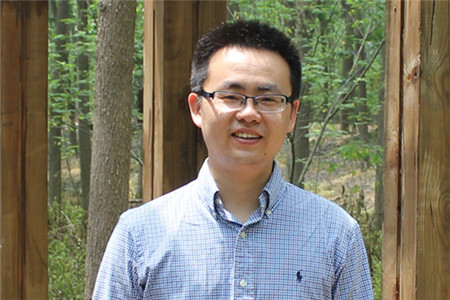
提要: “许多人都问过我,从事科研工作这么辛苦,你为何觉得有意思?我始终觉得关键在于兴趣。”
“许多人都问过我,从事科研工作这么辛苦,你为何觉得有意思?我始终觉得关键在于兴趣。少年班这种特殊的培养方式让我找到了从事科学研究的兴趣。”熊宇杰,这位从中科大少年班走出来的青年科学家,在谈及自己的母校时,难掩自豪之情。
熊宇杰是国家首批“青年千人计划”专家,中国科学技术大学教授、博导,1996年,年仅17岁的熊宇杰被保送进入中科大少年班学习。中科大少年班自诞生以来就充满传奇色彩,在中国教育界,从来没有哪个班级像中科大少年班这样饱受争议。30年来,少年班在“争议中前行”,从少年班走出来了1000多名学生,其中91%的毕业生获得了博士硕士学位。2015年,96级少年班成员尹希晋升为哈佛大学正教授,未满32岁,打破了他的师姐庄小威(87级少年班)创下的“34岁出任哈佛大学正教授”记录。
在熊宇杰身上,少年班的印迹一直都存在。在少年班养成的对于科学的好奇和爱好,对他后来的科研生涯产生了潜移默化的影响。今年,熊宇杰取得多项重大突破,并获得全国首届“最美科技工作者”称号和美国华人化学与化学生物学教授协会“Biomatik 杰出教授奖”,彰显出青年科学家的卓然风采。
“少年班让我找到了兴趣所在”
1996年,年仅17岁的熊宇杰被保送进入中科大教改试点班(又称“00班”)学习。“00班创办于1985年,与1978年成立的少年班同属少年班学院。我在少年班学院低年级的数学和物理课程都是和相应专业院系一起学习的,这为我目前的处于化学、物理和材料的交叉领域研究打下了坚实的基础。”
在中科大的8年时间里,熊宇杰从无数的选择中找到的自己的兴趣所在——化学,从那之后直到现在,他一直保持着对化学的好奇、热爱和坚持,兴趣是促使他不断创新的源泉和动力。2004年,熊宇杰从中科大博士毕业后赴美继续博士后研究。2009年,熊宇杰加入华盛顿大学圣路易斯分校,担任国家纳米技术基础设施组织首席研究员兼纳米中心管理主任。出任该职位时,熊宇杰刚刚踏过而立之年的门槛。他坦言,华盛顿大学工作的2年多时间对他后来的研究工作影响显著,“我当时的工作中包含了两项重要的工作内容:在各种课题中准确找到其关键科学问题;和不同领域的科研人员商谈可能的合作。我在这两项工作中得到了很多体会和经验,对于我后来的研究工作中的课题制定以及交叉合作等方面很有帮助。”
即便在美国的生活已经顺风顺水,熊宇杰始终没有体会到“家”的感觉。2010年,离开故土6年后,熊宇杰回国访问,这一次回国之行给他留下了深刻的印象,“我没想到短短几年间,国家发展得如此迅速,我觉得自己应该回国组建自己的科研团队,否则余生将留下无法弥补的遗憾。”他坦言,归属感是触动其回国的一个很重要的原因, 2010年底启动的“青年千人计划”更是为他提供了一个顺理成章的理由,于是他开始联系母校中国科技大学,在一切都准备就绪之后,熊宇杰携妻儿动身回国。
“三位一体”合作迸发出思想火花
2011年3月,熊宇杰到中科大报到,随即着手组建实验室和研究组,短短半年多时间内,一个简单的材料合成实验室初步建成。“在实验室建设和课题开展的过程中,我始终坚持沿着‘从简到繁、不一蹴而就’的思路,有了自己的实验室并初步确定研究方向之后,相应的进展就会适当地加快,目前我们团队除了众多研究生外,还有3名博士后,这显然是在起步阶段较难做到的。”
在之后的一年多时间里,熊宇杰不断思考如何根据自己独特的学术背景形成有特色的研究方向,他的研究方向也从最初的贵金属纳米结构合成发展到了目前的材料表界面调控。由于复合材料体系尤其是光催化体系相当复杂,要阐明其中的机制性问题需要通过不同学科的交叉与合作。因此,他开始和中科大的其他青年教授展开合作,并开创了“精准制备-理论模拟-先进表征”三位一体的交叉合作模式。
“平时我和江俊、张群、武晓君、宋礼等校内的年轻老师交往较多,江俊和武晓君擅长理论模拟,张群等擅长微观过程的先进表征。我们常在用餐或业余时间聊天,擦出‘思想火花’。基于这些想法以及我自己在无机材料设计与可控合成方面的优势,通过课题合作的形式自然形成了跨越多个学科的合作团队。我们这些青年教授通过多学科的交叉合作,得以实现了材料合成、理论模拟和原位表征的‘三位一体’模式,对无机复合材料体系的构筑原理开展系统而深入的研究工作。正所谓‘1 + 1 > 2’,不同学科的交叉与合作使得我们可以在特定科学问题上进行深入探讨。通过寻找貌似不太相同的课题之间的相同点,也会产生更多的新奇想法。”
经过研究团队成员共同的不懈努力和交叉合作,在过去两年,熊宇杰带领其团队取得了不少进展,《美国化学会志》、《德国应用化学》和《先进材料》等重要化学与材料国际期刊上报道了他们的系列科研成果,今年以来更是在太阳能转化技术、面向燃料电池应用的催化材料设计以及新型复合光催化剂上取得重大突破。
科研工作者并非“苦行僧”
在归国的短短4年时间里,熊宇杰从零开始,组建实验室、招收研究生、选择自己喜欢的课题努力深耕,在科研上连连取得突破,2015年更是交出了一份令人满意的答卷。他坦言,这些成果的取得离不开对化学的热爱,作为一名青年科学家,他认为自己同样有义务和责任把这份热情传递给每一位青年学子,让更多的人燃起对科学的热爱。
这一点充分体现在熊宇杰对于学生的培养上。熊宇杰回国后就开始带研究生,目前在读的有二十余人,在培养学生的过程中,他一直秉承中国传统的“言传身教”的理念,将做人与做学问的精神一起撒播给更多的青年学子。他认为,每一个学生都具有不同的特点,教师需要充分尊重他们的兴趣,给予他们足够的空间进行自我探索。只有在大胆尝试和勇于探索中,他们才会发现自己的兴趣点,找到从事科研的乐趣。“我在课程教学方面,也是秉承这样一种理念去进行的。从学生们的反馈来看,大家都很喜欢这种授课方式,也有所收获。看着自己的学生从一个极具可塑性的学生成长为具有独立工作能力的科技工作者,是一件无比愉悦的事情。”
在美国的6年,熊宇杰学会用国际视野来看待科学问题,也使他充分认识到国际化人才培养的重要性。在培养学生时,他采取“请进来”、“送出去”两种方式:一方面,邀请一些国际知名专家来学校做学术报告,让学生更多地接触到国际同行;另一方面,鼓励学生参加国际会议或把学生通过各种国际交流项目送去国外进行联合培养。其中,英文论文写作被熊宇杰视为国际化人才培养的重要环节,因此他在这方面做了很多努力。“每当有实验成果出来,我都会和学生进行面对面的沟通,为他们搭建论文框架、理清写作思路。执笔的工作尽量让他们自己完成。初稿出来之后,再由我来修改。”改论文是一件相当费时间的工作,熊宇杰仍然不遗余力,因为在他看来,这一环节对培养国际化人才非常关键。
培养学生树立对科学的兴趣是熊宇杰长期的工作理念所致,在他看来,科研工作并非“苦行”,科研工作者也并非“苦行僧”。尽管科研是占据了熊宇杰大部分的时间,他还是会把工作时间和家庭生活合理分开,尽量把晚上和周末的时间留给家人。“通过平衡科研和生活之间的关系,工作才不会成为一种负担,而我也得以保持对科学的好奇、热爱和坚持。作为一名父亲,孩子仅有一次的成长我不想缺席,与孩子的相处对我的工作也大有裨益。每一位学生对于我来说就像一张白纸,就如同我的孩子从幼儿园进入小学需要师长的引导一样,父亲和导师这两种角色其实有很多相似之处。”
除了陪伴家人,闲暇之余,熊宇杰也不忘和朋友们一起出行,他身边的朋友同样是一些青年科学家,放松与休息之余他们也会进行学术讨论,而且在这种自由的环境下,讨论往往会产生更具创造性的想法。
总结自己的科研之路,熊宇杰认为坚持是成功的一大秘诀,“这一点在兴趣的驱动下是比较容易做到的,对化学的热情一直是我前进的动力。另外,在学科不断细分的趋势下,交叉合作显得尤为重要。因此,我会经常和同行之间进行友好、高效的交流。”与此同时,熊宇杰还十分注重社会科普工作,在他看来,科普的必要性从近年来的很多事件就可以看出,近期发生的“我们恨化学”事件就是典型的缺乏对化学的正确认识所造成的。通过社会科普,可以唤醒社会对科学的认识和兴趣。
来源:千人杂志 时间: 2016-01-29
熊宇杰 纳米世界尽翱翔
熊宇杰,中科大化学与材料科学学院、合肥微尺度物质科学国家实验室(筹)双聘教授、博导,首批国家“青年千人计划”入选者,中科院“百人计划”引进人才。先后荣获全国首届“最美青年科技工作者”,美国2015年度Biomatik杰出教授奖等荣誉。
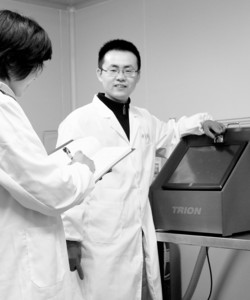
富有亲和力的笑容,是熊宇杰教授给记者最深刻的印象。日前,一个阳光灿烂的午后,记者如约来到中科大东区校园。刚走进熊宇杰教授办公室,他就迎了上来,热情地与记者握手。如果不是提前查阅资料,你可能想不到颇有书卷气的熊宇杰,早在32岁就入选首批国家“青年千人计划”,36岁的他已是纳米科技领域小有名气的科学家。
熊宇杰是中科大少年班的毕业生,是个事业有成的“海归”。在中科大谢毅院士门下读硕士、博士,正式开启了他的学术之路。年仅30岁,他就担任华盛顿大学(圣路易斯)国家纳米技术基础设施组织首席研究员,并兼任纳米中心管理主任。在美国,他有房有车,结婚生子,在外人看来,工作、生活都不错。 “但在美国,我一直没有‘归宿感’。 ”熊宇杰笑着说,中国始终是魂牵梦绕的地方,对母校中科大,他更是有着特别的感情。
2010年,我国启动 “千人计划”项目,看到一些优秀人才纷纷回国,熊宇杰心动了。在导师谢毅建议下,他当年就回国考察,并于次年成功入选国家首批“青年千人计划”。 “中科大有一批杰出的中青年教师,大家合作交流很好,国家投入也多,我的科研进展比国外同事要快得多。 ”熊宇杰坦言。
对于科研工作者来说,时间就是生命。自2011年回中科大任教后,熊宇杰立即着手建立自己的实验室和研究组。但这时“青年千人计划”的科研经费还没到位,学校陆续预借了400万元给他购买仪器设备。
“纳米世界,神奇惊艳,让我着迷。 ”熊宇杰介绍,纳米科技是世界前沿,是世界各国竞争的热点。纳米材料具有传统材料所不具备的奇异或反常的物理、化学特性,在极小的纳米尺度下,固态金属可以变得五颜六色,熔点会显著降低。在纳米世界,原本导电的铜加工到某个纳米尺度就不再导电,绝缘的二氧化硅在某个纳米尺度时则会变成导体。著名科学家钱学森曾预言:“纳米左右和纳米以下的结构将是下一阶段科技发展的特点,会是一次技术革命,从而将是21世纪的又一次产业革命。 ”
神奇的纳米世界,是熊宇杰愿意为之付出、为之努力的“圣地”。回国短短4年时间,聚焦纳米复合材料设计与可控合成及催化性能研究,他先后在国际期刊上发表通讯作者论文36篇,其中包括《美国化学会志》《德国应用化学》《先进材料》等国际重要化学与材料科学期刊论文13篇。
自认为做研究“不是苦行僧”的熊宇杰,这么短时间为何能取得如此骄人成绩? “国内科研合作一般比较困难,因为涉及成果排名问题,但中科大学术氛围很好,我们与相关领域教授和专家合作既高效又愉快。 ”熊宇杰寥寥数语,道出了成功的关键。
“没有脾气,对于科学问题,眼光独到。 ”谈起导师熊宇杰,正读博二的刘东如是说。在他印象中,熊老师平时话不多,但一讨论科学问题,往往滔滔不绝。 “他不仅对科研大方向把握很准,对小的细节也不放过。 ”目前,刘东已在著名刊物《德国应用化学》上发表了1篇第一作者论文。去年,熊宇杰指导的一名博士生,荣获中科院院长特别奖。
【人物感言】
科学研究不能放过任何细节,细节里可能蕴藏着重要的科学问题。熊宇杰教授在实验室工作。
来源;安徽日报
熊宇杰:“小宇宙”爆发大能量
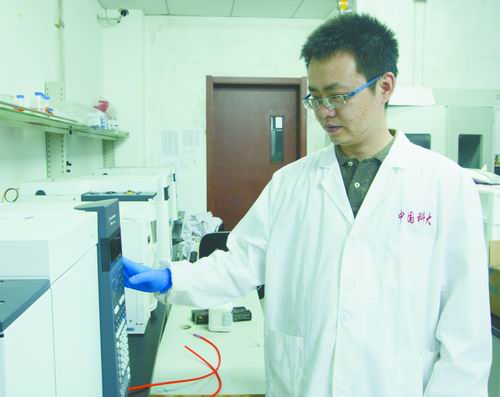
熊宇杰
这位36岁的年轻教授,回国短短几年,就在国际期刊上发表通讯作者论文36篇,并获香港求是科技基金会杰出青年学者奖、首届中国化学会纳米化学新锐奖、“2015年度Biomatik杰出教授奖”等荣誉。他的“小宇宙”正在爆发强盛的创新能量。
近日,中国科学技术大学教授熊宇杰荣获美国华人化学与化学生物学教授协会颁发的“2015年度Biomatik杰出教授奖”,该奖项每年只颁发两人。
这位年轻教授回国短短几年时间,先后获香港求是科技基金会杰出青年学者奖、首届中国化学会纳米化学新锐奖、中国化学会青年化学奖、中国科学院优秀导师奖、首届“最美青年科技工作者”等荣誉。
回国才有归宿感
在熊宇杰36年的人生历程中,他的成长仿佛正应了“宇杰”二字——才华卓尔,天下俊杰。
早先,熊宇杰是中科大少年班的毕业生,后来在中科大谢毅院士门下攻读硕士、博士。2004年,熊宇杰提前一年获得中科大无机化学博士学位,赴美国华盛顿大学(西雅图)做博士后研究,师从著名材料学家夏幼南教授。三年后,任美国伊利诺伊大学香槟分校材料与科学工程系助理研究员,在美国工程院和科学院院士John Rogers教授实验室工作。
由于突出的科研表现,2009年,年仅30岁的熊宇杰担任华盛顿大学(圣路易斯)国家纳米技术基础设施组织首席研究员,并兼任纳米中心管理主任。
此时的他已结婚生子,在美国买了房子,工作和生活都顺顺当当。但熊宇杰内心深处却感觉空落落的,找不到“归宿”感。恰在此时,我国启动“千人计划”项目。看到一些优秀人才纷纷回国,熊宇杰也开始思考去留问题。但由于在外多年,他对国内科研形势不太了解,一时犹豫不决。谢毅教授获悉后,建议他先回来看看。
“我2010年3月回母校,看到科研条件、发展态势都很好,感到在国内也能做出好成果,就决定回来了。”熊宇杰告诉《中国科学报》记者。同年年底,他入选中科院“百人计划”,次年3月到中国科大报到,8月入选国家首批“青年千人计划”。
熊宇杰的科研领域是面向能源问题的纳米复合材料设计与可控合成及催化性能研究。回国后,他立即着手组建实验室和研究组。但这时“青年千人”的科研经费还没到位,学校陆续预借了400万元给他购买仪器设备。只半年多时间,实验室初步建成。
“科大有一批水平很高的中青年教师,大家合作交流很好,国家投入也多,我的科研进展比国外同事要快得多。”熊宇杰说,对此他有一种“满足感”。
交叉合作结硕果
有了实验室这个平台之后的熊宇杰更显如虎添翼。不算回国第一年建实验室的时间,仅用三年时间,他就在国际期刊上发表通讯作者论文36篇,其中包括《美国化学会志》《德国应用化学》《先进材料》等国际重要化学与材料科学期刊论文13篇。真可谓“小宇宙爆发”。
自认为做研究“并不算刻苦”的熊宇杰,何以在短时间取得如此骄人成绩?他告诉记者,“首先是学校支持多,实验室建得快”。其次,得到了学校很多资深教授的支持和指导,经常和谢毅、罗毅这些国际知名学者探讨科学问题,逐步领会到跨领域科学研究的重要性。“第三,主要是认识了一批研究兴趣相投的教授,各种合作方向的老师都能找到”。
回国后,熊宇杰与江俊、张群、武晓君、宋礼等校内年轻教师交往较多,江俊和武晓君擅长理论模拟,张群等擅长微观过程的先进表征。他们常在食堂用餐或业余时间聊天,擦出“思想火花”,于是就开展“精准制备-理论模拟-先进表征”三位一体的交叉学科合作研究。
“尽管我本科学的是化学物理专业,属于交叉学科,但对一些原理的理解还是肤浅。与他们经常讨论,不断加深理解,这对我设计材料很有好处。”熊宇杰说,材料设计好后,再请做表征的老师来验证,这样更容易产生设计和验证的方法。采取这种交叉研究,前不久他们在英国皇家化学会《化学会评论》上发表了一篇综述论文。
“国内科研合作一般比较困难,因为涉及成果排名问题,但科大的学术氛围不错,我们合作得很高效、愉快。”熊宇杰说。
平和细心的导师
极富亲和力,是作为导师的熊宇杰给学生最深刻的印象。
读博二的刘东,已在《德国应用化学》上发表了一篇第一作者论文,目前还有两篇国际论文准备投稿。在他印象中,熊老师平时话不多,但一讨论科学问题,往往滔滔不绝。“他不仅对科研大方向把握的很准,对小的细节也不放过,他总是说细节可能蕴藏着重要的科学问题”。尤其让刘东感到高兴的是,熊老师为人很平和,“从没发过脾气,与他交流比较轻松,敢于大胆说出自己不成熟的想法。”
熊宇杰回国当年即开始带研究生,去年毕业的一名博士生获中科院院长特别奖,今年又将有4名博士和一名硕士研究生毕业,目前在读的十余人,他们都表现出较强的创新能力,原创成果不断涌现。
说起来,熊宇杰指导研究生也经历了一个过程。回国头两年,为加快进展,设计实验流程、分析数据、写论文,熊宇杰往往亲力亲为。但后来发现,这对学生的能力培养不利,于是就花更多时间与学生讨论交流,更多的让他们动手。
研究生入学伊始,熊宇杰都要与他们一一面谈,了解其兴趣爱好,然后确定研究方向和课题,介绍相关前沿文献让他们研读。课题开始简单,等做出成果、学生的兴趣和自信增强后,逐步加大难度。
熊宇杰和学生们交流、互动有一个规定安排,叫“两会”——每周一、周三上午是一对一的见面会,每次安排4~5名同学依次面谈,及时了解学生的科研进展,讨论存在的困难和问题,以及下一步工作如何开展;组会则是安排在每周二晚上,所有研究生一起参加,一次4~5人依次用PPT做报告,介绍自己课题的背景、研究进展、潜在的问题等,然后大家提出问题,进行讨论。熊宇杰每次都参加讨论,点评报告,提出改进意见,“目的是培养学生的表达交流能力,因为做好学术报告是今后从事学术研究的必备素质”。
英文论文写作是国际化人才培养的重要环节。实验成果出来后,熊宇杰讲清写作思路和框架,尽量让学生拿初稿,然后他来修改。“尽管改起来很费时间,有的甚至要改几十稿,但对培养国际化人才很有必要”。
来源:中国科学报 2015年06月12日
中科大教授熊宇杰:回国才有“归宿感”
中科大熊宇杰教授荣近日获美国华人化学与化学生物学教授协会颁发的“2015年度Biomatik杰出教授奖”。据悉,该奖项每年只颁发给两人。
25日,这位36岁的年轻教授向媒体透露,回国短短几年时间,先后获香港求是科技基金会杰出青年学者奖、首届中国化学会纳米化学新锐奖、中国化学会青年化学奖、中国科学院优秀导师奖、首届“最美青年科技工作者”等荣誉的秘诀,谈自己的“归宿感”。
回国才有了“归宿感”
2004年,熊宇杰提前一年获得中科大无机化学博士学位,赴美国华盛顿大学(西雅图)做博士后研究,师从著名材料学家夏幼南教授。三年后,任美国伊利诺伊大学香槟分校材料与科学工程系助理研究员,在美国工程院和科学院院士JohnRogers教授实验室工作。由于突出的科研表现,2009年,年仅30岁的他就担任华盛顿大学(圣路易斯)国家纳米技术基础设施组织首席研究员,并兼任纳米中心管理主任。
当时,熊宇杰已结婚生子,在美国工作生活都不错。但他内心深处,一直有种没有“归宿”的感觉。恰好,中国启动“千人计划”项目,看到一些优秀人才纷纷回国,熊宇杰开始思考去留问题。由于在外多年,对国内科研形势不太了解,一时犹豫不决。
“我2010年3月回母校,看到科研条件、发展态势都很好,感到在国内也能做出好成果,就决定回来了。”熊宇杰说。当年底,他入选中科院“百人计划”,次年3月到中科大报到,8月入选国家首批“青年千人计划”。
回国后,熊宇杰立即着手建实验室和研究组。但这时“青年千人”的科研经费还没到位,学校陆续预借了400万元人民币给他购买仪器设备。只半年多时间,实验室初步建成。
看到自己科研进展迅速,熊宇杰说,对此他有一种“满足感”。
“三位一体”的交叉合作
熊宇杰的科研领域是面向能源问题的纳米复合材料设计与可控合成及催化性能研究。刨去回国第一年建实验室,仅三年时间,他在国际期刊上发表通讯作者论文36篇,其中包括《美国化学会志》、《德国应用化学》、《先进材料》等国际重要化学与材料科学期刊论文13篇。
在他看来,这与学校、以及很多资深教授的支持和指导分不开,他常和谢毅、罗毅这些国际知名学者探讨科学问题,逐步领会到跨领域科学研究的重要性。
此外,在中科大“各种合作方向的老师都能找到”,熊宇杰与江俊、张群等校内年轻教师交往较多。他们常在食堂用餐或业余时间聊天,擦出“思想火花”,于是就开展“精准制备-理论模拟-先进表征”三位一体的交叉学科合作研究。他说,采取这种交叉研究,前不久他们在英国皇家化学会《化学会评论》上发表了一篇综述论文。
来源:中国新闻网 2015年05月25日17:32
中国科技创新人物云平台暨“互联网+”科技创新人物开放共享平台(简称:中国科技创新人物云平台)免责声明:
1、中国科技创新人物云平台是:“互联网+科技创新人物”的大型云平台,平台主要发挥互联网在生产要素配置中的优化和集成作用,将互联网与科技创新人物的创新成果深度融合于经济社会各领域之中,提升实体经济的创新力和生产力,形成更广泛的以互联网为基础设施和实现工具的经济发展新形态,实现融合创新,为大众创业,万众创新提供智力支持,为产业智能化提供支撑,加快形成经济发展新动能,促进国民经济提质增效升级。
2、中国科技创新人物云平台暨“互联网+”科技创新人物开放共享平台内容来源于互联网,信息都是采用计算机手段与相关数据库信息自动匹配提取数据生成,并不意味着赞同其观点或证实其内容的真实性,如果发现信息存在错误或者偏差,欢迎随时与我们联系,以便进行更新完善。
3、如果您认为本词条还有待完善,请编辑词条。
4、如果发现中国科技创新人物云平台提供的内容有误或转载稿涉及版权等问题,请及时向本站反馈,网站编辑部邮箱:kjcxac@126.com。
5、中国科技创新人物云平台建设中尽最大努力保证数据的真实可靠,但由于一些信息难于确认不可避免产生错误。因此,平台信息仅供参考,对于使用平台信息而引起的任何争议,平台概不承担任何责任。

